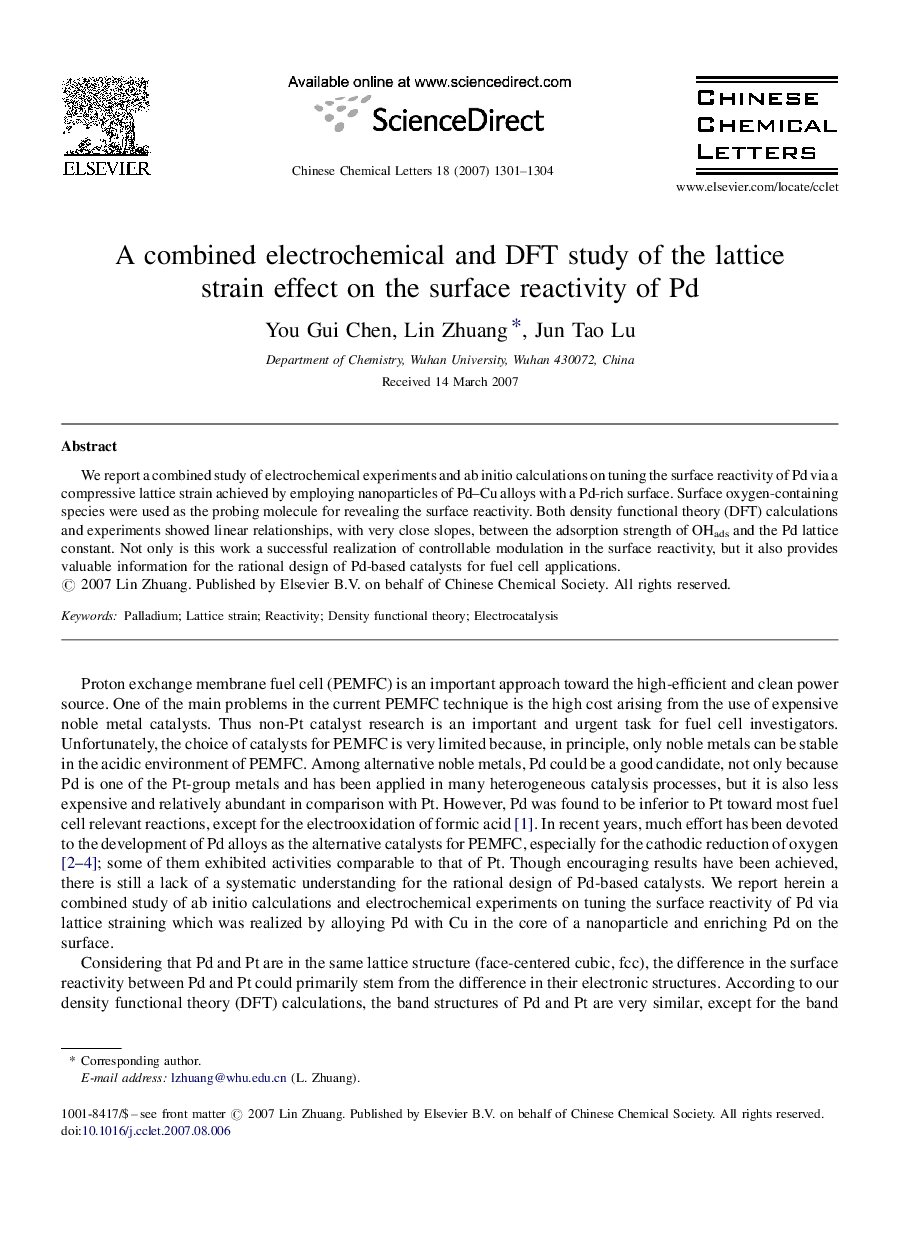| Article ID | Journal | Published Year | Pages | File Type |
|---|---|---|---|---|
| 1255947 | Chinese Chemical Letters | 2007 | 4 Pages |
Abstract
We report a combined study of electrochemical experiments and ab initio calculations on tuning the surface reactivity of Pd via a compressive lattice strain achieved by employing nanoparticles of Pd–Cu alloys with a Pd-rich surface. Surface oxygen-containing species were used as the probing molecule for revealing the surface reactivity. Both density functional theory (DFT) calculations and experiments showed linear relationships, with very close slopes, between the adsorption strength of OHads and the Pd lattice constant. Not only is this work a successful realization of controllable modulation in the surface reactivity, but it also provides valuable information for the rational design of Pd-based catalysts for fuel cell applications.
Related Topics
Physical Sciences and Engineering
Chemistry
Chemistry (General)
Authors
You Gui Chen, Lin Zhuang, Jun Tao Lu,
